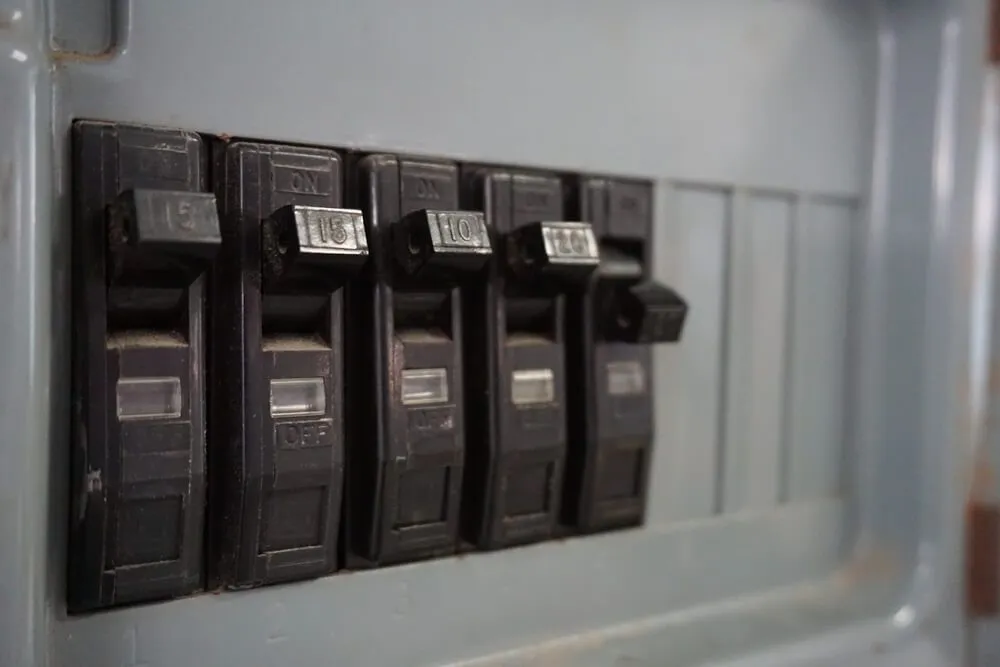If you’ve ever found yourself looking at circuit breakers, you may have been confused about what each one does. While they all look similar, they have very different functions. It’s important to understand how circuit breakers work to ensure your home is safe and protected from potential electrical mishaps. This blog covers everything you need to know about this essential equipment.
What Is a Circuit Breaker?
A circuit breaker is a safety feature designed to prevent electrical fires and shocks. If something is wrong with your home’s wiring, or if you have too many devices plugged in at once, the circuit breaker will trip, making sure that no other electrical devices can be used until it’s reset.

When a circuit trips, it means that too much electricity is travelling through one part of your home’s power system. This means that there may be an issue with the wiring, or it may be related to overvoltage issues.
The Function of Circuit Breakers
Circuit breakers are designed to protect your home. When a circuit breaker trips, it means that there is a problem with that circuit. The breaker will trip to prevent damage to the utility lines and other appliances in your home.
Once you understand how this equipment works and why it’s installed in every home or building with electricity, you’ll be better equipped to understand what happens when they malfunction or don’t work properly.
Types of Circuit Breakers
There are several types of circuit breakers, such as single-pole and double-pole breakers. Single pole breakers are used for lighting circuits, while double pole breakers are used for appliances that have motors. A typical 100-amp breaker has one hot line and two neutral lines. The hotline is connected to the power source, or incoming power line, while the neutrals connect in an electrical box behind the breaker panel’s cover plate.
The main difference between single and double-pole switches is that a single-pole switch only controls one side of an electrical circuit (e.g., lights), whereas a double-pole switch controls both sides (e.g., outlets).
There are two main styles of circuit breakers, bolt-on and plug-in. Bolt-on breakers were more common before the 1990s when more advanced devices replaced them. Nowadays, it is more common for electricians to install plug-in circuit breakers. These devices are used in specialized applications such as Class 1 Service Panels with no neutral bar or Class 2 Metering Panels with a neutral bar (though this is rare). The main difference between these two types is that with a bolt-on breaker, you’ll have to replace the entire device if it malfunctions, while an attached breaker can be replaced without having to replace the whole panel or meter box.
Applications of Circuit Breakers
Circuit breakers are important equipment for keeping your home safe from electrical problems. They save lives and protect against fire. Since circuits running on the same circuit breaker can be controlled independently, you can prevent one appliance from affecting another by adjusting its breaker setting. For example, suppose too much electricity passes through a single wire or connection point. In that case, it will cause overheating (or even melting), which could lead to fire or electrocution if not corrected immediately by disconnecting power at this point before causing damage elsewhere in your home’s wiring system.
Use High-End Quality Circuit Breakers
There are many different types and styles of circuit breakers available, so you must know what kinds of breakers work best with your wiring before making any decisions. Many service providers provide high-end services with constant, around-the-clock assistance; reach out to these companies and get a quote today! The last thing anyone wants is for their home or business to catch fire because they didn’t pay attention when installing this important equipment!
Santosh Kumar is a Professional SEO and Blogger, With the help of this blog he is trying to share top 10 lists, facts, entertainment news from India and all around the world.
